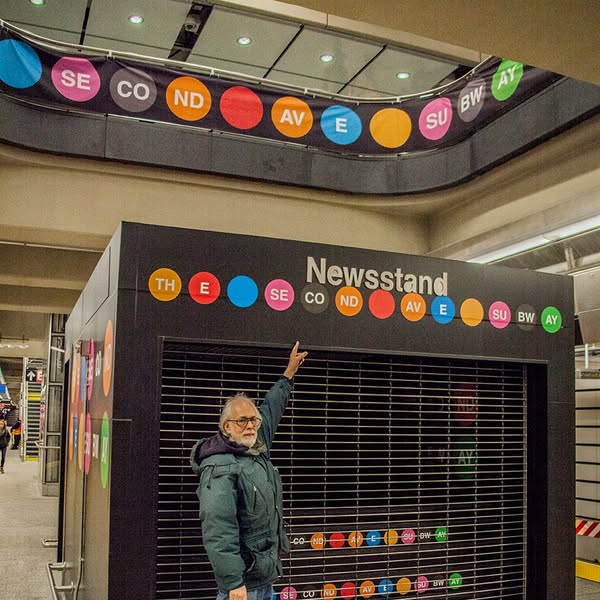In the spirit of landmarking
To The Editor:
Re “Houses of worship opposed to historic district may sue” (news article, July 14):
How strange that a community group representing sacred sites would object to the designation of an East Village Historic District whose purpose is to be their protection. Where did the idea originate that historic districts are harmful?
These sanctuaries, which are living history books, speak of the concentration of 19th-century immigrants who proudly built these havens, with limited resources, as the anchor in their neighborhood. Finances of these houses of worship have always been precarious, but somehow each generation managed to support them while celebrating their social and cultural heritages within their walls.
These havens, acting as shelters and bridges from the Old World to the New World, continue to be a source of pride for all who live in or tour the East Village, and are an integral part of our street vista.
I have led many tour groups through these sacred sites and am grateful for all who care for them. But instead of thinking of a lawsuit, why not seek out those sanctuaries that have already taken advantage of a historic district’s benefits and then have a roundtable discussion?
The Landmarks Conservancy Sacred Sites Program offers financial grants, advice on where to find historically appropriate windows and how to organize your restoration project, and helps with problems.
Your sanctuaries were built to rejoice in America’s guarantee of religious freedom, and now are sincerely appreciated by all New Yorkers searching for our city’s heritage. Nothing has ever been easy for houses of worship, regardless of where they may be. But I know you’ll be intrigued by people’s creative ideas and the volunteers that would be attracted to your restoration programs. You are not alone.
Terri Cook
Cook is author of “Sacred Havens: A Guide to Manhattan’s Spiritual Places”
Historic moment for East Village
To The Editor:
Re “Houses of worship opposed to historic district may sue” (news article, July 14):
The 10th & Stuyvesant Sts. Block Association represents the interests of the St. Mark’s Historic District, the only New York City landmark district that currently exists in the East Village. Though few are aware of the fact, the St. Mark’s Historic District was the very first New York City landmark district to be designated in Manhattan after the Landmarks Law went into effect — yes, even before Greenwich Village.
That was Jan. 19, 1969, more than 40 years ago. Except for isolated individual designations like the Ottendorfer Library (a hard-won victory), the Stuyvesant Polyclinic and the Merchant’s House, among a few others, it was the last time that the historic significance of this area was officially and significantly recognized. That recognition is long overdue.
The history of the area is a primer of how a city develops: from 17th- and 18th-century shipping and mercantile outpost; to 19th- and 20th-century safe harbor for waves of immigrants; to crucible for nearly every social, labor, literary, artistic and urban movement of the 20th century. It is time — perhaps just in the nick of time — to recognize the legacy of what came before through landmark designation, so that future generations may continue to see this neighborhood’s rich history, and not just read about it.
Just imagine Second Ave. without the Ottendorfer Library and the Stuyvesant Polyclinic, virtually all that remains to remind us of the thriving German population that made its home here in the late 19th century until the Slocum disaster; or without the Yiddish Arts Theater, now a lovingly recycled movie house with a landmarked interior, as well, giving us a glimpse of the once-rich Yiddish theatrical culture that dominated the avenue early in the 20th century.
Think of E. Fourth St. without that cultural treasure trove, The Merchant’s House, a completely intact Federal residence built in 1832 and lived in by one New York family for 100 years! And what if the St. Mark’s Historic District had not been designated in 1969 — and expanded in 1984? Partially developed by the last Dutch governor‘s grandson on Stuyvesant farmland, the district includes 37 buildings and the individually designated St. Mark’s Church in the Bowery.
Happily, all of the above mentioned were saved (I have no doubt) by landmark designation. And they not only survive, they thrive.
I have lived in one of the designated buildings for 42 years and I find that landmark designation is a mark of respect: You become part of something larger and that brings more than it takes away. To everyone’s benefit, perhaps the emphasis on its architectural and cultural history will help this neighborhood to redefine itself once again, this time from a place to come and drink to one where you come and think.
Marilyn Appleberg
Appleberg is president, 10th & Stuyvesant Sts. Block Association
Release accident reports
To The Editor:
Re “Police must release reports on major bike accidents” (talking point, by Charles Komanoff, July 7):
The obscuring or withholding of exactly what the Accident Investigation Squad learns is an ethical issue. Accurate information that leads to our understanding of street death aids us in saving lives. When the public is not informed of what is learned from these investigations, we squander opportunities to eliminate the unnecessary suffering of victims and their families. Similarly, the absence of police to enforce speed limits and the yield-right-of-way law — which led to the death of my husband — becomes an immoral act.
Mary Beth Kelly
Kelly’s husband, Dr. Carl Nacht, died in June 2007 from injuries suffered when he was cycling on the Hudson River Park bikeway and was hit by a Police Department tow truck cutting across the bikeway at W. 38th St. that failed to yield to him.
Playground of dreams
To The Editor:
Re “Strouse leaves her mark on a park” (news brief, June 30):
The playground at Union Square Park was finally dedicated to my mentor, Evelyn Strouse, with her (very grown) kids there. I started advocating for this playground when my son was 2 years old and now it’s official — and he’s 16!
It was a great day. I hope everyone with little kids can come enjoy this beautiful playground — and think of Evelyn when you do.
Susan Kramer
Zoning made Soho great
To The Editor:
Re “A frightening prospect” (letter, by Bonnie Lynn, April 7):
I second Bonnie Lynn’s sentiments about not changing the zoning in Soho. The business improvement district is a move powered by real estate agents and those residents who want to sell their lofts to the highest bidders despite the artist-in-residence restrictions. Those residents benefitted from the zoning restrictions once, but now that it’s a small impediment to their potential real estate profits, they want it to go away.
The A.I.R. zoning was responsible for all that made Soho unique — a community of creative people and a cultural draw — and should be enforced at last, not discarded.
B.C. Crane
LA II story seems dubious
To The Editor:
Re: “Who is LA II, and why can’t he get any recognition?” (Clayton’s Page, by Clayton Patterson, March 3):
Interesting article. I pulled out my Prestel Keith Haring book (edited by Germano Celant) and did indeed find work which was unattributed to Angel Ortiz. However, I’m not so sure I agree with Patterson’s perspective here.
Haring was famous in his own lifetime, so Ortiz had ample opportunity to demand his own recognition from Keith. Why didn’t he?
While the book I have does have some omissions of credit (actually, there was only one that was obvious — Plate 60 for anyone who has this book), there are a number of pieces in the book where he, in fact, is given credit as a collaborator.
I agree, it is easy to spot the pieces with his contributions. However, I believe that’s all they are, contributions. They don’t appear to me to be true collaborations.
I do agree he deserves his credit. But since I have not been able to find anything about any legal pursuits by Angel Ortiz himself, I can only conclude that he was complicit in the ultimate presentation of these pieces as solo works attributed to Keith alone.
Through a friend who knew Keith Haring well, I also learned that Angel Ortiz (a.k.a. LA II) does indeed have his own career with works selling well into six figures — which sounds to me like he does enjoy a successful career in his own right.
The story of Ortiz showing up for a museum tour and making the statements quoted here sounds, well, dubious at best. Also, Ortiz’s work as a solo artist would not be mistaken for a Haring if they were hanging side by side: It takes less than 15 seconds of observation to see the differences.
Paul Thomas Martin
E-mail letters, not longer than 250 words in length, to news@thevillager.com or fax to 212-229-2790 or mail to The Villager, Letters to the Editor, 515 Canal St., ground floor, NY, NY 10013. Please include phone number for confirmation purposes. The Villager reserves the right to edit letters for space, grammar, clarity and libel. The Villager does not publish anonymous letters.

































